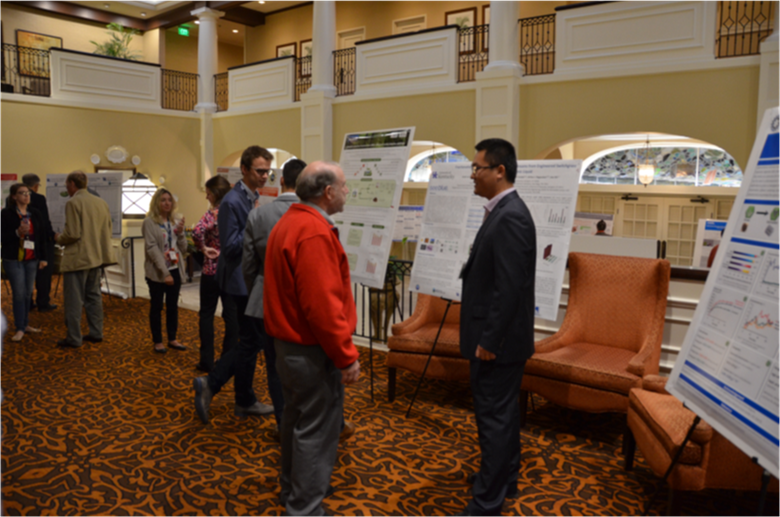By Enshi Liu
Bioenergy is a sustainable energy produced from biological renewable resources, such as woody biomass, agricultural wastes, and energy crops. Motivated by the depletion of fossil fuels, the production of bioenergy has become one of the research frontiers in the past decade. Cellulose, hemicellulose, and lignin are three main structural components in lignocellulosic biomass. Cellulose is a linear polymer of glucose units, while hemicellulose is a heterogeneous polymer which consists of C5 and C6 sugars. Extensive research has been conducted on conversion of cellulose and hemicellulose to biofuels such as ethanol and butanol. Lignin, the most abundant source of aromatic polymers, is generally considered a waste product from biorefineries. However, as suggested by techno-economic analyses, lignin valorization is the key to the success of biorefinery.
As a graduate student in Dr. Jian Shi’s research group in the University of Kentucky Department of Biosystems and Agricultural Engineering, I am trying to find an efficient and sustainable way to produce biofuels/chemicals from plants that we cannot eat.

Last November, I received a travel award sponsored by the National Science Foundation, which allowed me to attend the 2016 Frontiers in Biorefining Conference with Dr. Jian Shi and Lalitendu Das, a postdoctoral scholar in Dr. Shi’s lab. At this conference, biofuels researchers introduced biorefinery concepts and their current research topics. Most of the presentations were related to catalytic conversion of lignin and carbohydrates, for instance, the development of efficient catalysts, novel approaches to depolymerize lignin, and mechanistic modeling of bioconversions. Researchers also introduced the applications of biobased chemicals and materials, such as bioplastics and carbon fiber. Development of advanced biomass deconstruction and characterization methods was also discussed in this conference. This academic activity was informative and helpful to me and my ongoing research.

I presented my research, titled “Fractionation and characterization of lignin streams from engineered switchgrass using an aqueous ionic liquid,” and gave a five-minute flash talk at the conference. Currently, most of the lignin research is focusing on how the compositional or structural features of lignin change during the feedstock pretreatment. However, the effect of genetic modification on the fractionation and depolymerization of lignin from engineered plants is not well understood. My research aims to fractionate and characterize different lignin streams from wild-type and engineered switchgrass species using an aqueous bio-derived ionic liquid. I investigated the structural and compositional features and the impact of lignin manipulation on lignin-carbohydrate characteristics. The study provides a better understanding of how lignin modification influences lignin fractionation and depolymerization during aqueous ionic liquid pretreatment. During the poster competition, I received the second place award.

Breaking down the plant cell wall structure in an efficient way is a challenging task. However, it is meaningful to show that finding a sustainable way to produce energy is possible.
Enshi Liu is a master’s student in the Department of Biosystems and Agricultural Engineering (BAE) at University of Kentucky. Prior to joining BAE, he completed his undergraduate study in China’s Hainan University and worked for four years as a research assistant at the Chinese Academy of Tropical and Agricultural Sciences. His advisor is Assistant Professor Dr. Jian Shi. His research interests focus on production of biofuels, chemicals, and bioproducts from sustainable resources by exploring biological approaches.
